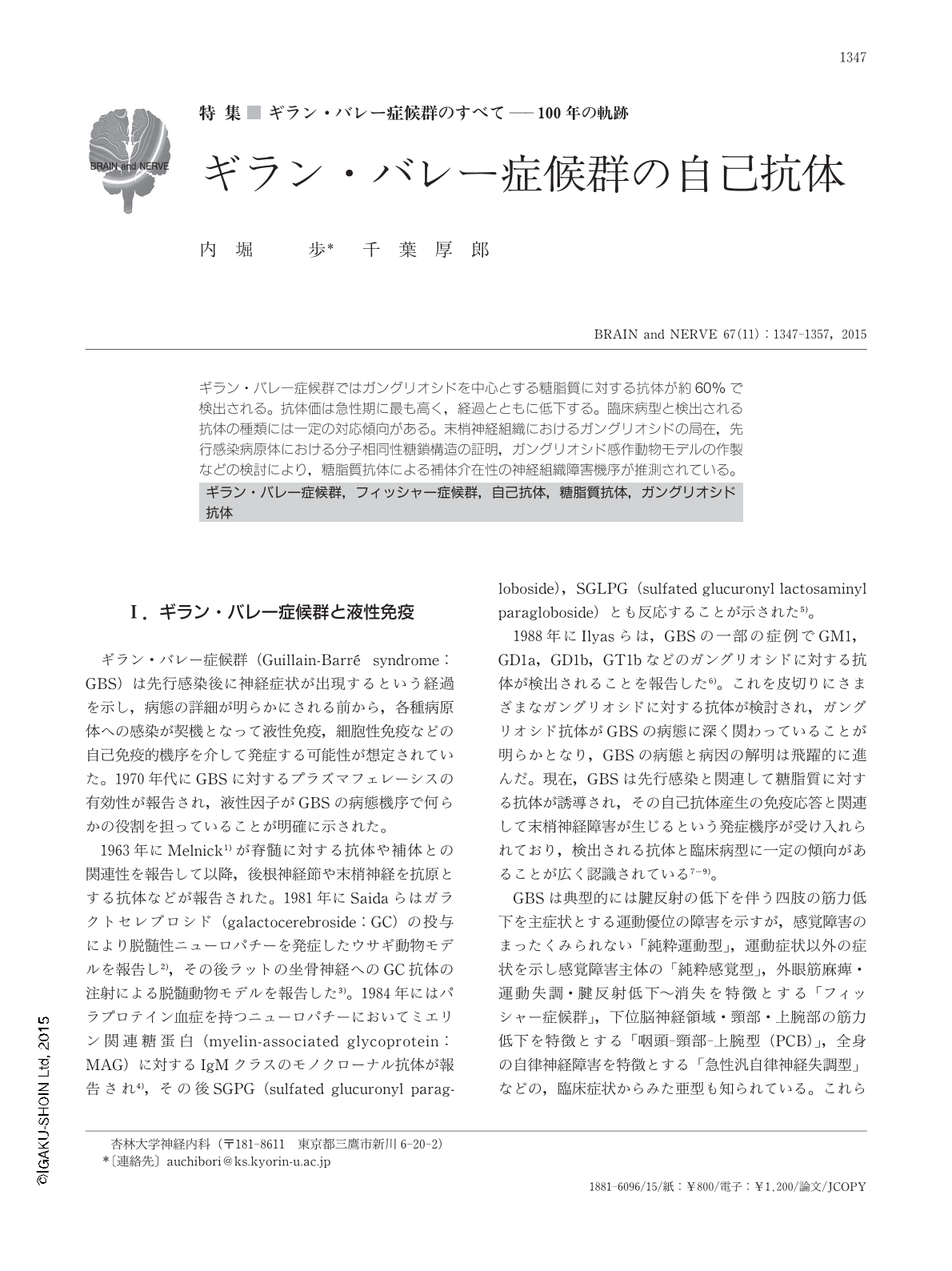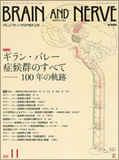Japanese
English
- 有料閲覧
- Abstract 文献概要
- 1ページ目 Look Inside
- 参考文献 Reference
ギラン・バレー症候群ではガングリオシドを中心とする糖脂質に対する抗体が約60%で検出される。抗体価は急性期に最も高く,経過とともに低下する。臨床病型と検出される抗体の種類には一定の対応傾向がある。末梢神経組織におけるガングリオシドの局在,先行感染病原体における分子相同性糖鎖構造の証明,ガングリオシド感作動物モデルの作製などの検討により,糖脂質抗体による補体介在性の神経組織障害機序が推測されている。
Abstract
Serum antibodies against glycolipids, mainly gangliosides, are detected in about 60% of patients with Guillain-Barré syndrome (GBS) and its variants. Anti-glycolipid antibodies play a crucial role in the pathogenic mechanisms of GBS. The antibody titer is the highest in the acute phase and decreases gradually. Molecular mimicries occur between the glycolipids and surface molecules on the infectious agents. Clinical subtypes of GBS are related to the antigenic specificities of the antibodies. The distribution of gangliosides in peripheral nervous tissues could explain the different clinical manifestations. The anti-GQ1b antibody is detected in 80-90% of patients with Fisher syndrome characterized by ophthalmoplegia. GQ1b is localized in the paranodes of the human cranial nerves innervating the extraocular muscles. This is consistent with the clinical association between the anti-GQ1b antibody and ophthalmoplegia. The anti-GM1 antibody is associated with acute motor axonal neuropathy, whereas the anti-GD1b antibody is detected in acute sensory ataxic neuropathy. GBS animal models sensitized by gangliosides, such as GM1 or GD1b, develop monophasic peripheral neuropathies. In the animal models, disruption of molecule clusters and deposition of complement products were observed in the nodal and paranodal regions. Clinical and experimental data suggest complement-mediated pathogenic mechanisms triggered by anti-glycolipid antibodies in GBS.

Copyright © 2015, Igaku-Shoin Ltd. All rights reserved.


